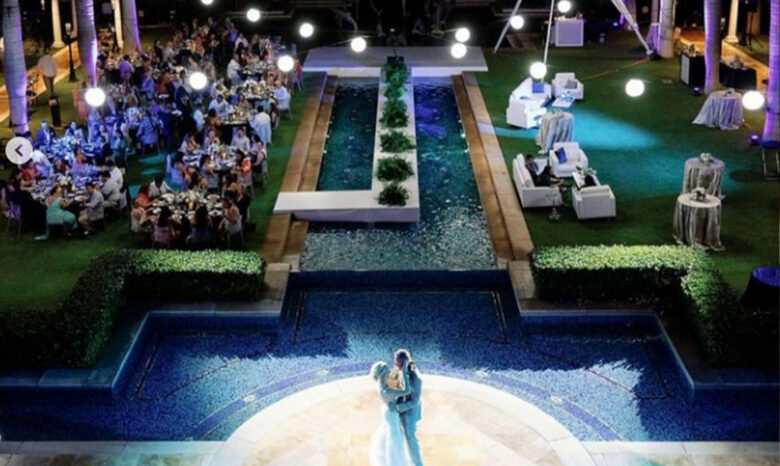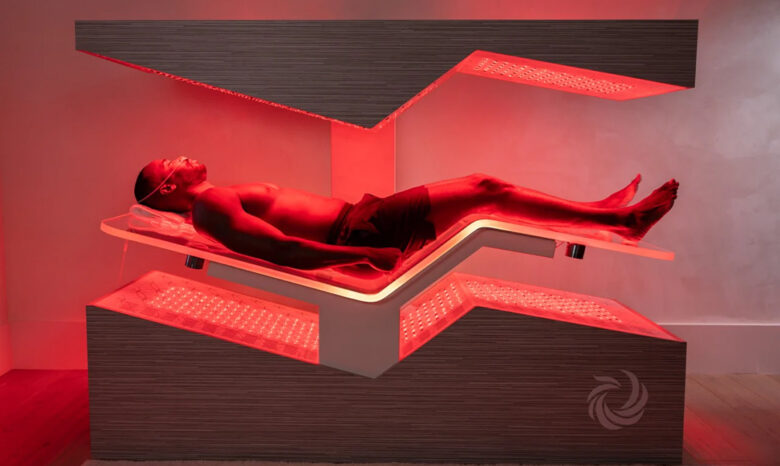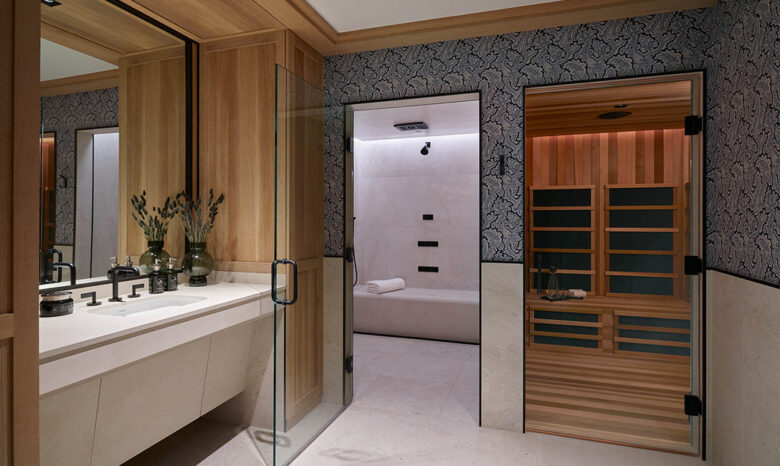TLEE Spas + Wellness Forecasts the Future of Wellness for 2025

TLEE Spas + Wellness, a leading spa development firm with a design forward, hospitality-driven approach, unveils key insights on major trends shaping luxury wellness design in 2025. These trends highlight three main focuses: the shift from treatment rooms to communal spaces; the rise of high-tech, customizable modalities; and the growing emphasis on holistic and immersive healing journeys.
“As self-care becomes a priority to our clients’ daily lives, we’re witnessing major changes in how people experience and integrate wellness in their lifestyle, travel plans and home/workplace environments,” says Tracy Lee, founder and president of TLEE Spas + Wellness. “The traditional spa business model is evolving, and the demand for adaptable environments that both optimize technology innovations and human connection is transforming how we think about spa and wellness settings.”
Focus Shifts from Treatment Rooms to Communal Environments
Commercial spas are shifting focus from the prevailing model of private treatment experiences to communal healing spaces that accommodate diverse user groups and experiences such as social events, team building activities and multigenerational travel.
To engineer a social wellness journey, planning and design should embrace multi-use spaces that seamlessly adapt to the expanding boundaries of spa and wellness. Evolving beyond the traditional 9-to-7 business model, wellness is no longer limited to standard operating hours. Instead, spas are becoming venues for parties, special events and corporate offsites.
Establishing a social environment with multi-faceted offerings also creates the ideal foundation for membership programs, which not only foster community building but also create additional high margin revenue streams for operators. People are craving places where they can connect with like-minded people and practices which has given rise to a proliferation of wellness clubs with a distinctly social dimension. For example, the Spa at The South Seas Island Resort on Captiva Island will include two group fitness studios, geared to mindful movement modalities and high-intensity interval training (HIIT) that connect to an outdoor terrace that will shift gears for social events and communal activations.


The Grand Wailea on Maui harnesses this trend with its first “wellness wedding,” featuring Rachael McCrory, Hilton’s Regional Director of Spa and Wellness, North America. The wedding took place in different venues within Kilolani Spa, TLEE’s latest launch. It heralds a trend that will likely gain momentum, as couples seek out alternative wedding venues that highlight mindfulness and human connection.


At Spa Botánico at Dorado Beach, A Ritz-Carlton Reserve, private groups can take over the entire spa after hours for wellness-focused gatherings, romantic experiences and social celebrations.
This evolution extends into the luxury residential realm, as affluent homeowners increasingly request private wellness environments that rival leading-edge commercial settings. Their size and scale have expanded beyond a steam shower and/or dedicated treatment room into full-scale lifestyle retreats.
Multi-generational travel is also a rising trend in the wellness industry, driven by the increasing desire for immersive and meaningful wellness experiences that extended family and friends can enjoy together. This societal shift provides the opportunity to “de-silo” wellness by making it more accessible and inclusive to the guest proposition, creating spaces guests can enjoy with their children and grandchildren, while still preserving quiet, reflective spaces. As Tracy Lee puts it, “I always encourage clients to loosen up their age restrictions. I have a 15 and 17-year-old, and I want to bring them along to experience wellness—not necessarily for expensive treatments, but to work out, do yoga with them, and expose them to all the beautiful things wellness has to offer.”
Integrating Personalized Technology into the Spa Setting
The integration of technology has revolutionized the traditional spa experience, and 2025 will usher in further advances which feature innovative solutions that enhance self-care while amplifying traditional healing practices.
Clients are increasingly embracing technology-based bio harmonization modalities that cater to a wide range of needs, allowing guests to construct their own experience that is attuned to their individual specificity. This trend dovetails with the growing scarcity of skilled therapists, especially within the North American market. According to the World Economic Forum’s Future of Jobs 2023 Report, the wellness and personal services sector ranks in the top five industries requiring significant workforce reskilling and upskilling. Specifically, 42 percent of companies surveyed indicated a skills gap as a critical barrier to business transformation in wellness-related fields.
Technology solutions also respond to the growing consumer demand to optimize their mental and physical performance, alleviate stress, speed recovery from training and active pursuits, and reboot the mind/body connection.
“Technology-driven innovations like AI massage chairs and infrared light therapy meet the needs of a diverse audience who seek proven and proactive strategies to maximize their health and well-being” explains Michael Lahm, vice president and COO of TLEE Spas + Wellness. “For instance, devices like the AMMORTAL chamber, which combines red light therapy, molecular hydrogen, PEMF, and sound therapy, deliver customizable treatments that target specific goals. Typically quicker and easier to access than therapist-driven treatments, these offerings also appeal to an audience that want wellness solutions on their own terms, with or without the human element.”


Spas are increasingly adopting these technologies not only to meet consumer demand, but also to adapt to the realities of a limited labor pool and operational challenges. Modalities such as the AMMORTAL chamber, AESCAPE, and robotic devices like ‘Massage Betty’ and ‘Fit Betty’ offer consistent, reliable services minus the heavy labor factor. Often introduced to the market through professional athletes, these innovations lure road warriors and wellness enthusiasts for targeted recovery treatments within conference hotels and airports, where quick, efficient fixes are in high demand.


A prime example of this integration is Austin Proper, a TLEE Spas client, that recently introduced a private suite of stackable tech-driven modalities to add a new dimension to their wellness offering, utilized as a stand-alone experience or paired with high-touch services like prescriptive bodywork.
While we are leaning into tech modalities on numerous projects, location, target audience and broader brand context are key considerations. From our perspective these types of offerings are best suited to urban locations, or resort properties with a large local audience where robust utilization validates ROI.
Immersive Healing Journeys
While we celebrate the shift towards more accessible and spontaneous wellness environments, we are also doubling down on the ritualistic aspect of the spa experience that highlights multisensorial journeys with a strong sense of ritual. From our perspective, it is the human factor that helps us tap into the full expression of wellness (including emotional and spiritual dimensions) that create profound shifts and positive change.
Fully immersive and transformative experiences are now pivotal to the needs of certain guests, given the sense of isolation and alienation that many people feel in their everyday.
These personalized retreats offer profound healing journeys, allowing guests to explore personal transformation in a safe and serene space that provide guests with a unique opportunity for self-discovery. Holistic healing comes to fruition through intentional design, gracious hospitality, and authentic personal care incorporating intuitive wisdom.
It’s critical not to lose sight of the details that make these experiences feel special and meaningful. Timeless hospitality is essential, ensuring that guests feel nurtured and cared for in every interaction. This trend also extends into the rise of functional music, which plays a role in shaping the emotional and spiritual atmosphere of these transformative spaces.


This approach was front of mind when architecting the vision for the new spa at The Little Nell Aspen, a unique setting consisting of luxurious self-contained suites, with private infrared halotherapy saunas and hydrotherapy steam rooms that create an inspired and adaptable setting for highly curated and multidimensional wellness experiences.
Our inspiration came from the ‘Aspen Idea’—a holistic lifestyle philosophy embodying the joy of active pursuits, the rejuvenating effects of nature, and the integration of mind, body, and spirit.
The menu provides an integrated approach to wellness that revolves around three therapeutic pathways: Recover + Repair, Replenish + Restore, and Reset + Rebalance, with targeted remedies for the high-altitude environment, active adventure, and high-performance living.
Incorporating a vast array of technology that leverages the latest advancements in sports medicine and bio-harmonization, in conjunction with timeless wellness modalities and high-touch therapies that are crafted by skilled healing artist – these cutting-edge rituals embody stacked experiences that transcend traditional spa services.
Psychedelic retreats are also emerging as a pioneering offering in wellness destinations. To facilitate these experiences effectively, the setting must instill equal measures of beauty, safety, nature and serenity to foster mindful engagement and personal growth.
This shift towards immersive journeys reinforces the importance of designing spaces that support not only physical wellness but also emotional and spiritual well-being. As more guests seek out these transformative experiences, wellness facilities must thoughtfully balance the need for cutting-edge, multi-sensory environments with the core principles of comfort, care and timeless hospitality.